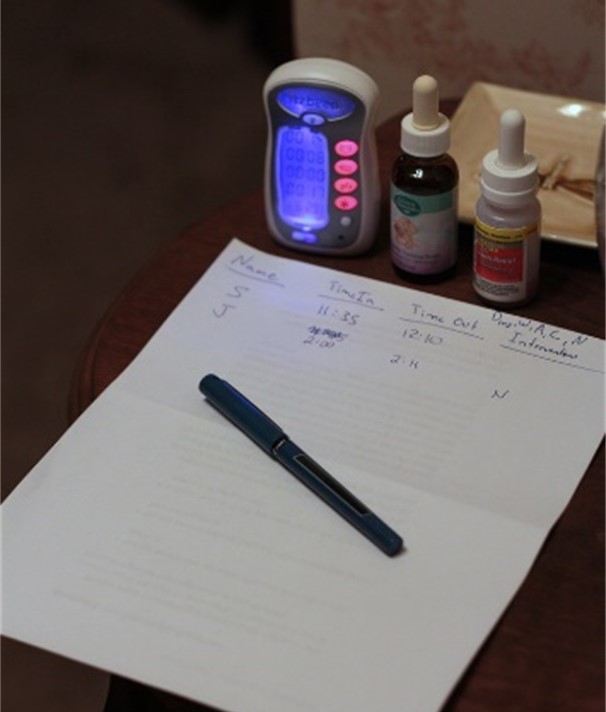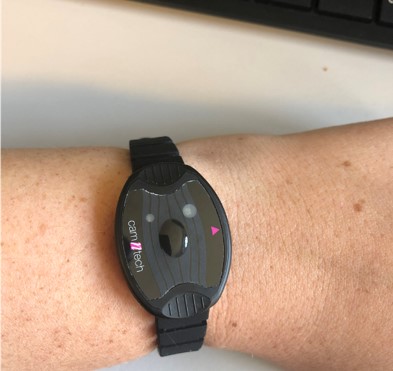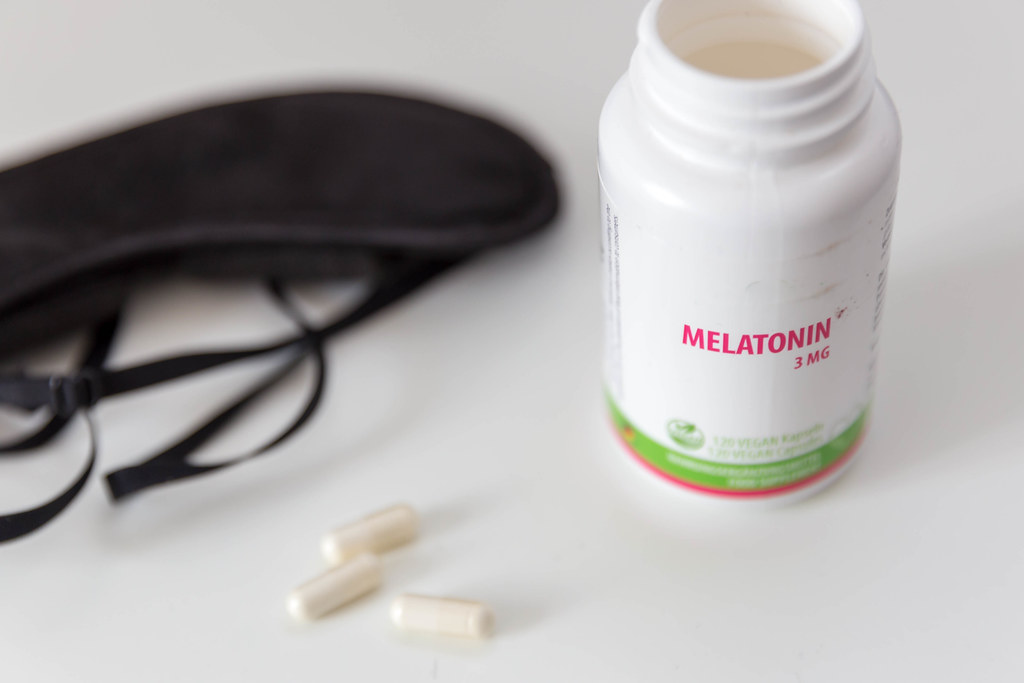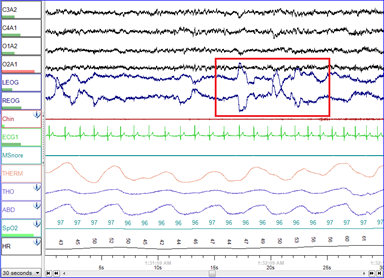Your primary care provider often can determine if you have insomnia based on your clinical history and exam. Other measures are not always needed, but they can paint a more holistic picture.
Sleep Diary
“Day 57: Sleep Log" by Sean M Freese a |
A sleep diary is an easy way to record sleep-related activities. You can jot down the time you go to bed, wake up, and other important sleep-related behaviors. For example, you can record what time you had caffeine or alcohol. You can also log when you woke up in the middle of the night. Bringing the sleep diary to your appointment can provide your provider with accurate and valuable information. If you are interested in starting a sleep diary and do not know where to start, click here. (PDF) |
Actigraphy
“Motion Watch 8" image provided by Jeanne Duffy, PhD, MBA b |
Actigraphy is a method of monitoring rest and activity over an extended period of time. The device resembles a wristwatch and uses an accelerometer to detect motion. Using various algorithms or rules, lack of movement is interpreted as sleep, and motion as wakefulness. Together with a sleep diary, actigraphy can give an accurate assessment of sleep patterns in a person's natural sleep environment. |
Dr. Shadab Rahman describes how actigraphy can be used to estimate sleep patterns.
Dim Light Melatonin Onset (DLMO)
|
Melatonin is a naturally produced hormone in your body. It is released mostly at night and helps regulate your sleep-wake cycle. The onset of melatonin secretion under dim light conditions (DLMO) has been used to assess your internal 24-hour (circadian) pacemaker. DLMO is used to evaluate problems that are related with the onset and offset of sleep. Studies have shown that pre-treatment measurements of DLMO may improve diagnosis and treatment of circadian sleep disorders. It is common for some circadian sleep disorders to be misdiagnosed as insomnia. In these cases, DLMO is may be beneficial to make the correct diagnosis. |
Polysomnography (PSG)
“Polysomnography" licensed by Creative Commons Attribution-Share Alike 3.0 d |
Polysomnography (PSG) is the real-time recording of multiple bodily signals during sleep. A PSG is not used to diagnose insomnia, but it can be used to rule out other sleep disorders. Your brain waves and other body activity are measured. To learn more about PSG, click here. |
Do I need a PSG sleep study to be evaluated for insomnia?
It can be inconvenient to participate in an overnight sleep study. Generally, a PSG sleep study is needed only when other sleep disorders like obstructive sleep apnea may be present or if the initial diagnosis is uncertain. Also, if behavioral and pharmacological treatments have failed, or sudden arousals occur with harmful behavior, a PSG sleep study may provide clinicians with more information.



